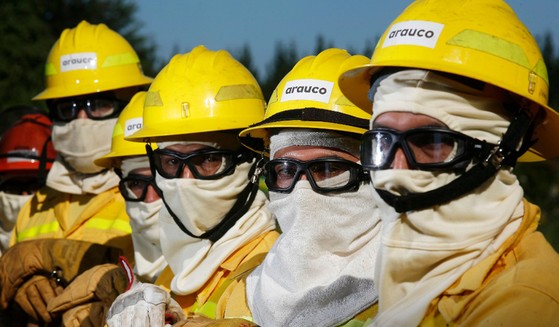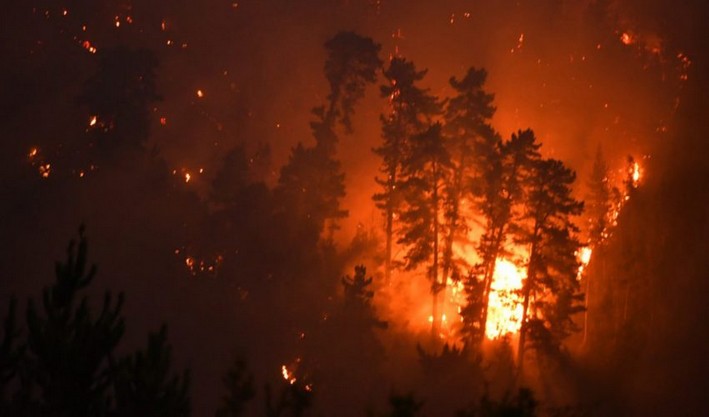Expert Explains the Scope of the New Anti-Terrorism Law Following Arson Attack in Santa Bárbara
Law No. 21.732, recently implemented in Chile, aims to more precisely define terrorist acts, rigorously punish those responsible, and protect fundamental rights. This legislation responds to criticisms about the vagueness of the previous anti-terrorism law and—following the attack on the Rucalhue Power Plant—could be applied for the first time in the Biobío province.
In this context, La Tribuna spoke with lawyer Ociel Rubilar Vallejos, director of the legal firm abogadoslosangeles.cl, to understand the scope of this legislation, which seeks to combat terrorism in the country more rigorously.
1. What does the Anti-Terrorism Law entail, and what is its main objective within the legal system?
Law No. 21.732 aims to precisely define terrorist conduct, establish its penalties, and ensure its application respects fundamental rights. This legislation responds to prior criticisms about the vagueness and arbitrary use of the former Law No. 18.314, seeking a balance between state security and individual guarantees.
2. How is a "terrorist act" legally defined? What elements must be present for a crime to be classified as terrorism?
For the definition, we must refer to Article 2 of Law No. 21.732, which defines a terrorist act as a crime committed with the intent to cause severe fear in the population or a segment of it, or to compel authorities or an international organization to act or refrain from acting. For a common crime (such as arson) to be classified as terrorism, the following must coincide:
- Objective element: The act must be defined in Article 3 of the law, which includes crimes such as homicide, serious injuries, arson, placement of explosive devices, kidnapping, or destruction of critical infrastructure (such as aircraft or energy plants).
- Subjective element: The intent must be to generate severe fear or coerce authorities, demonstrated through planning, the means used, or associated claims.
- Suitable means: The act must employ methods capable of causing significant harm, such as explosives, weapons, or attacks on vital infrastructure.
- Social impact: The crime must have an effect that goes beyond individual harm, affecting public safety or institutional order.
In the case of Rucalhue, the intentional arson of a hydroelectric plant, accompanied by threatening messages, could meet these criteria if the intent to generate fear or pressure authorities is proven—especially since the law explicitly includes the destruction of critical infrastructure (Article 3, paragraph 2).
Ociel Rubilar Vallejos
3. When and how is the Anti-Terrorism Law applied in response to an attack? Is it a decision made by the prosecutor, the judge, or the government?
The application of Law No. 21.732 begins with the prosecutor, who evaluates the investigation's findings to determine whether the crime meets the elements of a terrorist act. In the case of Rucalhue, I understand that National Prosecutor Ángel Valencia has already announced the law's application due to the severity of the attack and its impact on critical infrastructure, setting a precedent in the Biobío province. The decision is based on evidence such as the nature of the act, the means used, and possible claims.
The judge of guarantees reviews this classification during the formalization hearing, confirming or rejecting the law's application based on the evidence. The government can influence by filing complaints for terrorism, guiding the investigation, as has occurred in similar cases in the southern macrozone. Law No. 21.732 reinforces the prosecutor's role by requiring clear justification of terrorist intent (Article 2), aiming to reduce arbitrary applications.
4. What types of attacks have been classified as terrorist acts? Could you provide some relevant examples?
Since Law No. 21.732 is recent (February 2025), there are no direct precedents for its application before the Rucalhue case. However, under the repealed Law No. 18.314, attacks such as the following were classified as terrorist acts:
• Attacks on the Santiago Metro (2014): Placement of explosive devices to generate mass fear.
• Arson attacks in La Araucanía: Burning of trucks, forestry machinery, or infrastructure, attributed to groups with territorial demands, when terrorist intent was proven.
• Luchsinger-Mackay Case (2013): Arson resulting in death, initially investigated as terrorism (later changed in application).
5. What are the main differences in judicial treatment between a common crime and one classified as terrorism?
Law No. 21.732 establishes significant differences between common crimes and terrorist acts:
- Penalties: Terrorist crimes carry aggravated penalties. For example, common arson (Penal Code, Article 476) may be punished with 3 to 5 years, while terrorist arson (Articles 3 and 4 of Law No. 21.732) can result in 7 years to life imprisonment, depending on the outcome.
- Special procedures: The law allows measures such as detention without communication for up to 7 days (Article 10), interception of communications, use of undercover agents, and protected witnesses, always with judicial authorization.
- Pretrial detention: More likely in terrorist cases due to severity and social risk, with strict requirements for provisional release.
- Investigation: Terrorist cases are prioritized by specialized prosecutors and may involve the National Intelligence Agency (ANI).
- Burden of proof: Proving terrorist intent is required, which can be complex, but the law facilitates access to advanced investigative tools.
6. What implications does being prosecuted under this law have for the accused? Are rights restricted, or does the detention regime or access to judicial guarantees change?
Being prosecuted under Law No. 21.732 implies:
1. Detention regime: Allows incommunicado detention for up to 7 days (Article 10), restricting contact with lawyers or family, with judicial authorization.
2. Pretrial detention: More likely due to the crime's severity, with strict requirements for provisional release.
3. Restriction of guarantees: The use of protected witnesses (Article 11) complicates the right to defense, as witness identities may be withheld.
4. Harsher penalties: Sentences are longer, significantly affecting the accused's freedom.
5. Stigmatization: Being labeled a terrorist carries social and media repercussions that may impact the presumption of innocence.
However, the accused retain fundamental rights, such as access to a lawyer, the right to a fair trial, and the ability to appeal.
Source:La Tribuna

















